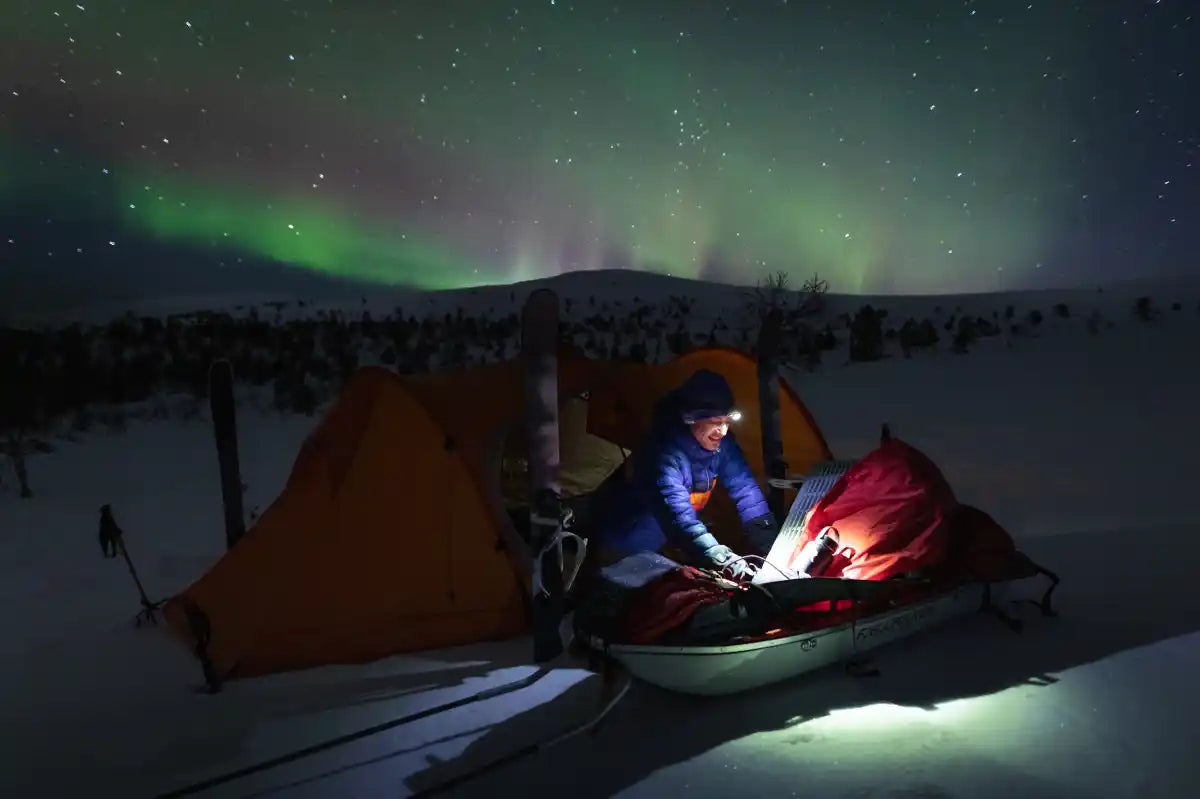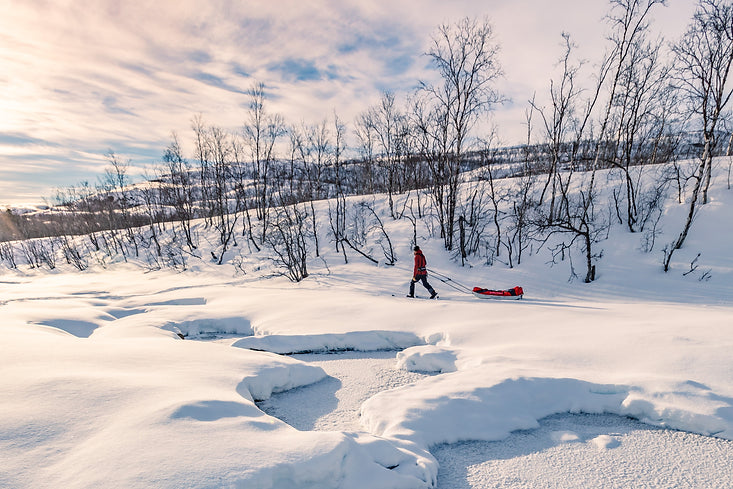You’ve decided that this is the season. After plenty of day trips on your Skinbased skis, you are dreaming up a bigger adventure - a night out in the backcountry, surrounded by nothing but the forest and the stars above. It’s an unforgettable experience, but it’s also a serious outing, one that is worth preparing for appropriately.
While beyond the scope of this article to outline every important aspect of winter camping, here are some key tips to make your first overnight Skinbased camping trip a safe and (mostly) comfortable one.

1. Start small, dream big
Are you sure that sleeping bag will keep you warm? Is that tent going to manage the weight of fresh snow? In order to test yourself, your systems, and your gear, we recommend starting small - a one-night trip with a decent forecast and somewhere familiar. You can always build up from there.
If you're feeling hesitant, why not have a night out in your backyard or near the car before going deep into the backcountry.
2. Have the right equipment
Winter requires some specialized kit that is not needed during the rest of the year. Additionally, having the right gear is about more than comfort; it’s about safety. Whether you rent, borrow, or buy, make sure your equipment is in good working order and suitable for the winter conditions you will be experiencing.
Extra Winter Essentials:
- Four-season tent
- Winter sleeping bag (rated for temperatures lower than what is expected)
- Insulated sleeping pad (check the R-value)
- Stove and fuel that work in freezing temps (e.g., liquid fuel stove)
- Shovel (for leveling your tent spot and digging a kitchen area)
- Skinbased skis with EA Universal Bindings (KAR 149 or XCD BC 160)
Not essential, but a pulk sled (gear sled) instead of a large backpack is highly recommended for all but the densest and steepest terrain. 
3. Layer like your life depends on it (because it might)
By now, you have certainly heard of layering, but do you know the biggest winter-rookie mistake? Sweating through your clothes while active and freezing at camp.
A good rule of thumb is that if you are cool (not cold) while moving, you will be warm at camp. What does that look like in practice?
- Wear moisture-wicking base layers and light insulation while skiing.
- Once you stop, immediately throw on your puffy jacket.
- Always keep one set of dry clothes just for sleeping.
4. Choose your campsite wisely
When it’s time to set up camp, location is everything.
Look for:
- A flat area
- Some natural wind protection (trees, cliff, etc.)
- A spot with access to clean snow for melting water
- A spot far from any avalanche danger including avalanche runout zones
If the snow is deep, dig out a platform for your tent, stomp the snow flat, and let it set for 10–15 minutes before pitching — this gives you a solid base.
5. Stay on top of food and water consumption
You’ll burn a ton of calories simply keeping warm, so eat regularly and don’t be shy.
One nice advantage of winter camping is that you can prepare a fully ready meal at home (think pasta and meat sauce, or a loaded veggie curry and rice) and simply put the entire thing into a plastic sealable bag and in the freezer. Pack it in your pulk just before leaving on your trip. At camp, simply plop the meal out from the bag and into the cook pot with a tiny bit of water. Melt, heat, and serve!
For snacks, bring what you like, and things that won’t freeze! Pro tip: Bounty bars are about the only chocolate bar that won’t freeze.
For water, melt snow. Bring extra fuel (because melting snow takes more than you think) and a kettle specifically for melting snow (to stop food contamination).

6. Master the night routine
Evenings are long and cold in the winter. Get your system dialed:
- Build a small kitchen trench to block wind while cooking and melting snow.
- Change into your dry clothes only when you are sure you have done all the evening chores and you won’t be getting sweaty.
- Sleep with your boot liners and water bottle inside your bag so they don’t freeze solid.
- Pee before bed (trust us, you don’t want to crawl out of your sleeping bag at 2 a.m.).
7. Respect Old Man Winter
Check weather forecasts before heading out, always let someone know your route and expected return time, and be aware of avalanche danger.

8. Leave No Trace (Yes, even in the snow)
Everything you pack in, pack out — food scraps, TP, and all. If you dig snow pits or tent platforms, fill them back in before you leave. Respect the wild so others can enjoy it too.
Conclusion
Winter camping is an alluring mix of challenge and reward — you’ll earn every turn, every moment, and every steaming cup of coffee in the snow. It can be tough, it will be cold, and it’s absolutely incredible. Start small, stay smart, and you’ll be hooked!

0 kommentarer